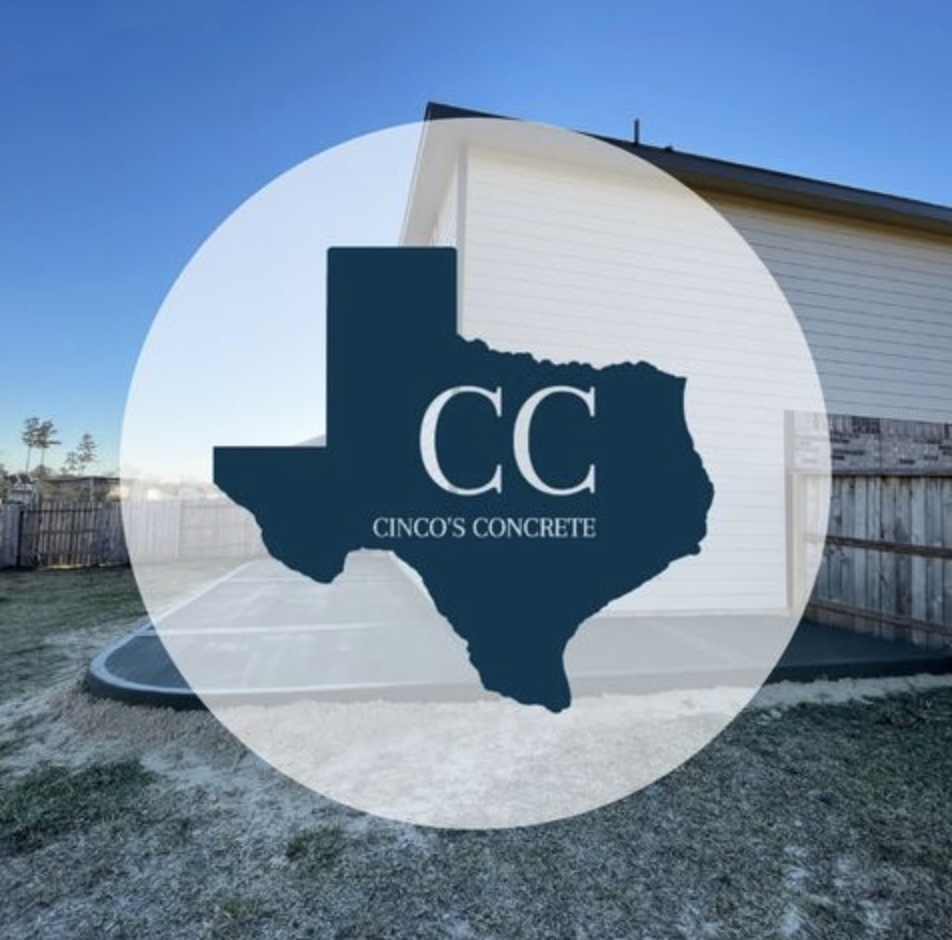
How Much Does a 20x20 Concrete Patio Cost?
How Much Does a 20x20 Concrete Patio Cost?
A 20x20 concrete patio is a substantial addition to any home. It creates 400 square feet of usable outdoor space. The cost can vary significantly. This depends on numerous factors, from basic materials to elaborate designs.
Generally, a standard, broom-finished 20x20 concrete patio can cost anywhere from $4.50 to $8.00 per square foot. This translates to a total project cost of $1,800 to $3,200 for just the concrete and basic installation. However, this is a very baseline estimate.
Adding decorative finishes, complex designs, or extensive site preparation can push the price much higher. Some high-end decorative patios can exceed $20 per square foot, totaling over $8,000. The final price reflects every choice made.
Primary Cost Drivers for a Concrete Patio
Many elements contribute to the overall price of a 20x20 concrete patio. Understanding these components helps homeowners manage their budget. Each factor plays a significant role in the final cost.
1. Patio Size and Thickness
While this article focuses on a 20x20 patio (400 sq ft), its specific dimensions dictate the concrete volume. The thickness of the slab is equally critical. It directly impacts the cubic yards needed.
For a 20x20 patio:
A 4-inch thick slab is standard for light foot traffic and general use. This requires approximately 4.94 cubic yards of concrete. This is the most common thickness for patios.
A 5-inch thick slab provides increased durability. It is recommended if you plan to place heavy items, like a hot tub, on the patio. This thickness requires roughly 6.17 cubic yards.
A 6-inch thick slab is for extremely heavy loads. This might be considered if vehicles will occasionally drive onto the patio, or for very large, heavy outdoor kitchens. This requires 7.41 cubic yards.
More concrete volume means higher material costs. Thicker slabs also require more excavation and potentially more robust sub-base materials. This increases overall labor time as well.
2. Concrete Mix Type and PSI
The type of concrete mix ordered significantly affects cost. Different strengths, measured in Pounds per Square Inch (PSI), are formulated for various applications. Higher PSI mixes are more expensive.
2,500 - 3,000 PSI: This is typically sufficient for a standard patio with light foot traffic. It's the most economical option.
3,500 - 4,000 PSI: This offers greater durability and strength. It is often recommended for areas that will experience heavier use or colder climates with freeze-thaw cycles. This concrete costs more per cubic yard.
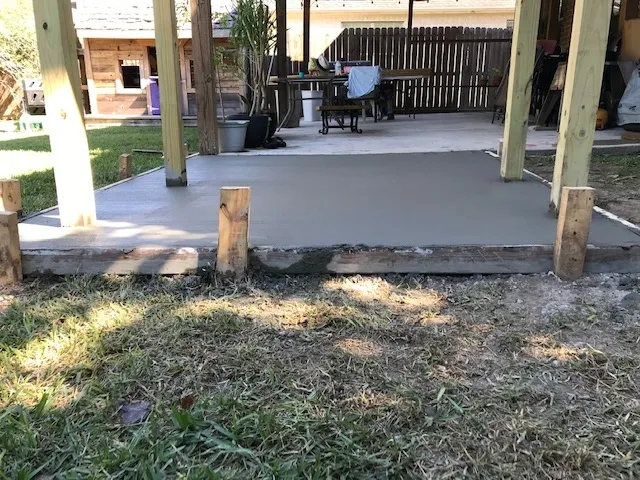
Additionally, admixtures can be added to the concrete mix. These are chemicals that modify the concrete's properties.
Air-entrainment: Improves resistance to freezing and thawing. Essential in regions with harsh winters.
Water reducers: Allow for a more workable mix with less water, increasing strength.
Fibers: Synthetic fibers can be added to reduce plastic shrinkage cracking.
Each additive contributes to the cost. Discussing your climate and specific needs with concrete patio contractors helps determine the right mix. This ensures long-term performance.
3. Site Preparation and Excavation
The condition of your existing site is a major cost factor. Before pouring, the area must be cleared and properly graded. This ensures a stable and level foundation.
Clearing and Debris Removal: If the area has dense vegetation, old structures, or significant debris, removal costs will apply.
Excavation: Digging out the area to the correct depth for the patio slab and sub-base is labor-intensive. Rocky or hard soil increases excavation time and cost.
Grading and Drainage: Proper grading ensures water drains away from your house and off the patio. This might involve sloping the ground or installing French drains. Complex drainage solutions add to the cost.
If an existing concrete patio or other hardscaping needs to be removed, demolition and disposal fees will apply. This can range from $2 to $6 per square foot depending on thickness and accessibility. Neglecting proper site preparation can lead to costly future problems.
4. Sub-Base Materials and Compaction
A properly installed sub-base is crucial for the longevity of your concrete patio. It provides a stable, uniform bed for the concrete. It also helps with drainage and prevents slab movement.
The most common sub-base material is gravel or crushed stone. The thickness of this layer is usually 4-6 inches for a patio. Material costs vary by region.
Labor for spreading and compacting the sub-base adds to the expense. Compaction requires specialized equipment, such as a plate compactor. Skipping this step can lead to settling and cracking of the patio.
5. Reinforcement
Reinforcement adds tensile strength to the concrete. It helps control cracking caused by temperature changes and ground movement. The type of reinforcement impacts the overall cost.
Wire Mesh: This is a common and relatively inexpensive option for patios. It comes in rolls and is laid out before the pour.
Rebar (Reinforcing Bar): More robust and expensive, rebar provides superior strength for heavier applications. For a 20x20 patio, a grid of #3 or #4 rebar might be used.
Fibers (already discussed as an admixture): Can also act as a reinforcement, particularly against plastic shrinkage cracking.
Rebar requires more labor to cut, lay out, and support with chairs. Proper placement of any reinforcement within the concrete is essential for its effectiveness.
6. Formwork Materials and Labor
Formwork creates the exact shape and height of your concrete patio. It typically involves using lumber (like 2x4s or 2x6s) and stakes. The complexity of the patio's shape affects formwork costs.
Straight, rectangular patios are easier and less costly to form. Patios with curves, intricate angles, or multiple levels require more material and skilled labor. These design elements will increase the labor portion of the cost.
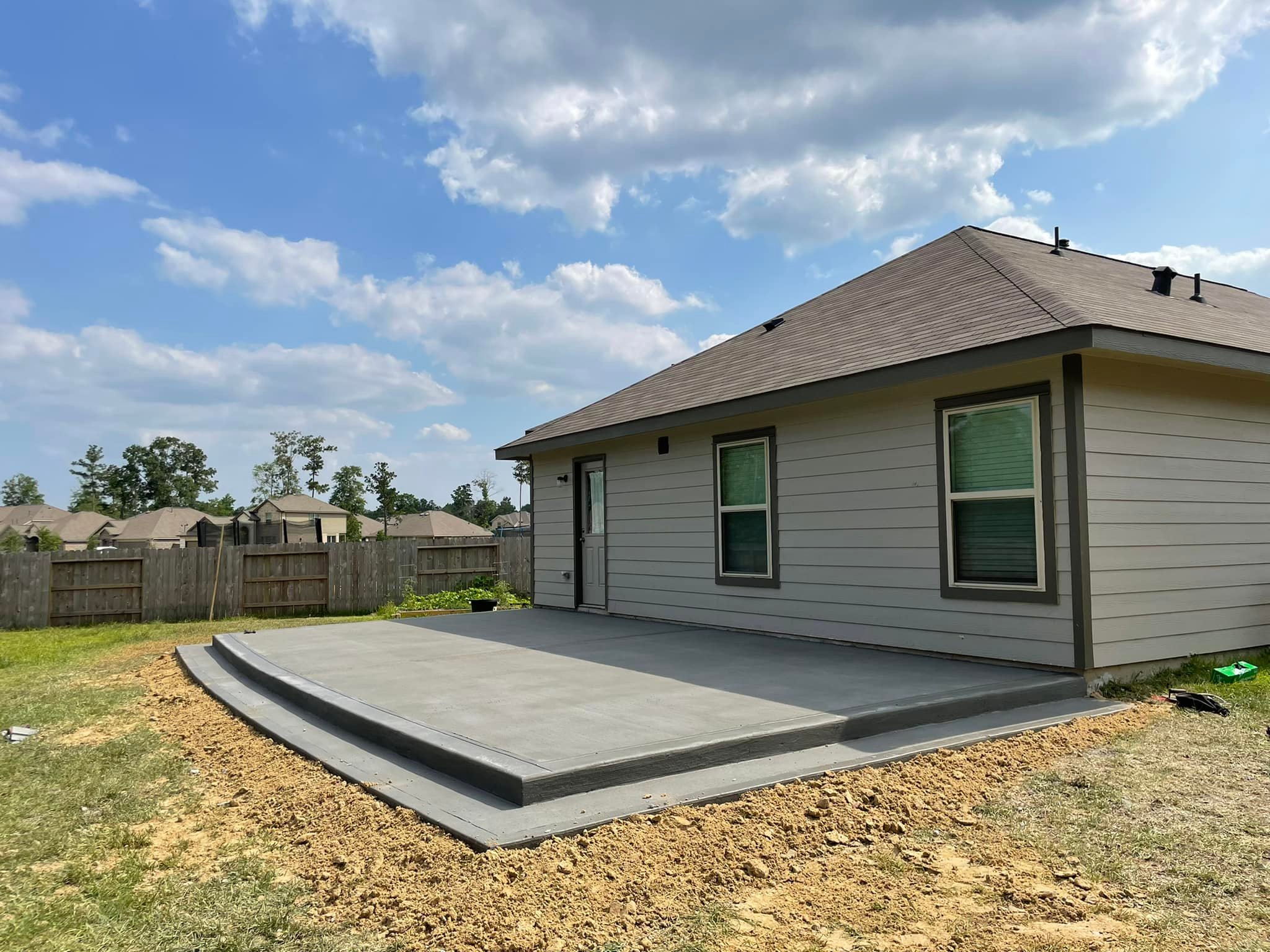
Reusable forms are an option for contractors, but for single projects, materials are often purchased new. The time spent setting up, squaring, and leveling the forms is a significant labor component.
7. Accessibility and Delivery Fees
The ease of access to your patio site affects delivery costs and labor efficiency. If the concrete truck cannot get close to the pour location, additional measures are needed.
Long Hauls: If the batch plant is far from your home, delivery fees will be higher. Fuel surcharges are also common.
Limited Access: If the truck cannot back up directly to the patio, concrete may need to be moved by wheelbarrow or concrete pump. Wheelbarrowing 4.94 to 7.41 cubic yards is extremely labor-intensive.
Concrete Pump: Renting a concrete pump (with operator) costs hundreds to over a thousand dollars for a minimum charge. This is a significant additional expense but can save considerable labor for large or hard-to-reach pours.
Always discuss site access with your concrete patio contractors. This helps them accurately quote the project. It also ensures a smooth delivery and pour.
Finishing Options and Their Cost Impact
The finish of your concrete patio is perhaps the most significant determinant of its aesthetic appeal and final cost. Basic finishes are inexpensive, while decorative options can escalate the price considerably.
1. Basic Finishes (Most Affordable)
These finishes provide a functional surface and are the most budget-friendly.
Broom Finish: After floating, a broom is dragged across the surface. This creates a textured, non-slip surface. It's ideal for safety, especially in wet conditions. Cost is minimal, usually included in the base per square foot price.
Smooth Trowel Finish: This creates a dense, smooth surface. It requires skilled application with a hand trowel or power trowel. It's often used for garage floors but can be slippery when wet. The cost is slightly higher than broom finish due to the extra labor.
2. Decorative Finishes (Mid-Range to High-End)
These options elevate the patio's appearance, mimicking other materials or adding unique designs. They require more specialized labor, tools, and materials.
Colored Concrete: Pigments are added to the concrete mix or applied to the surface.
Integral Color: Pigment added to the mix before pouring. Provides consistent color throughout the slab. More expensive than topical methods. Costs an additional $1-$3 per square foot.
Dry-Shake Color Hardener: Pigment broadcast onto the wet surface and troweled in. Creates a denser, more durable surface. Offers vibrant colors. Costs an additional $0.50-$2 per square foot.
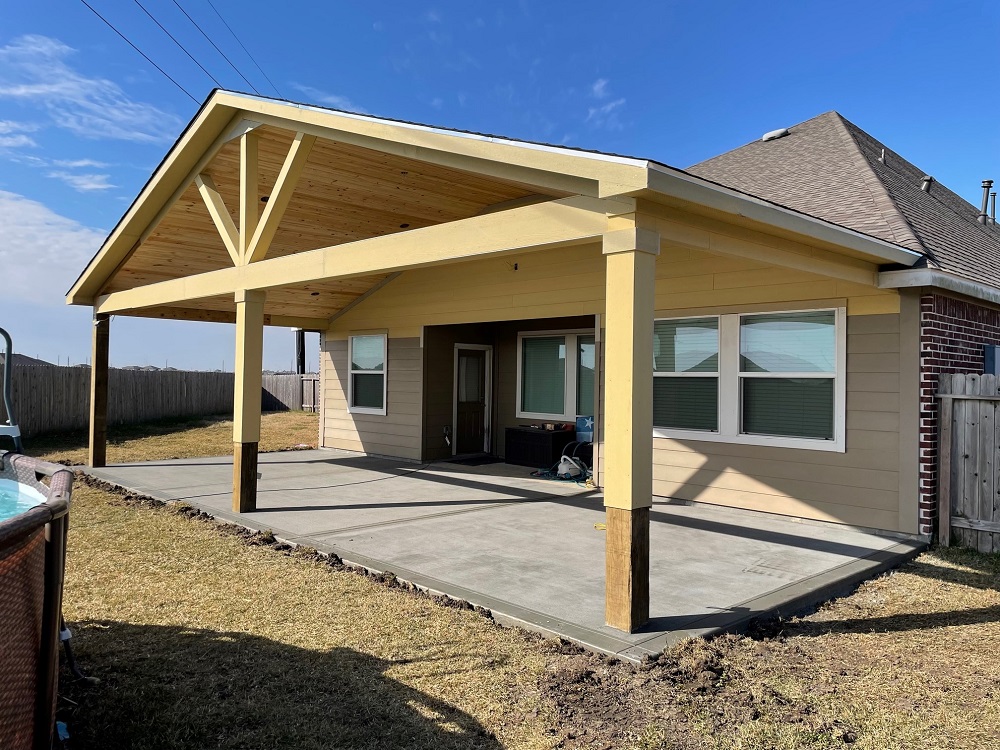
Stains (Acid or Water-Based): Applied after the concrete cures. Acid stains react with minerals to create mottled, translucent effects. Water-based stains provide more uniform color. Costs an additional $2-$8 per square foot, depending on complexity. Staining is a popular choice for many concrete patio contractors.
Stamped Concrete: This is a very popular decorative option. Molds are pressed into the wet concrete to replicate the look of natural stone, brick, wood, or tile.
Complexity: Intricate patterns, multiple colors, and realistic textures increase the cost.
Materials: Release agents and sealers are also needed.
Labor: Requires highly skilled and experienced concrete patio contractors. Timing is crucial.
Cost: Stamped concrete generally adds $5-$15 per square foot to the base price, potentially reaching $10-$20+ per square foot overall. This makes it a high-end option.
Exposed Aggregate: This finish reveals the beauty of natural stones, gravel, or crushed glass within the concrete mix.
Process: The surface cement paste is removed while the concrete is still somewhat fresh. This exposes the aggregates below.
Materials: Can use standard aggregates or specialized, more expensive decorative aggregates.
Cost: Adds $3-$8 per square foot to the base price. It offers a unique, textured, and slip-resistant surface.
Salt Finish: Rock salt crystals are sprinkled onto the wet concrete. They are then pressed in and washed away after the concrete sets. This creates small, unique indentations for texture. This is a subtle decorative option. It adds minimal cost, typically $1-$2 per square foot.
Scored or Saw-Cut Patterns: After the concrete has cured, lines are saw-cut into the surface. These create patterns like large squares, rectangles, or custom designs. This can mimic large tile pavers. It adds $1-$3 per square foot, depending on the intricacy of the cuts. These are often combined with coloring or staining.
Polished Concrete: This is primarily for indoor applications but can be used for covered outdoor spaces. Concrete is ground down using progressively finer abrasives. It creates a smooth, high-gloss surface. It is very durable and easy to maintain. However, it is one of the most expensive finishes, costing $5-$15 per square foot for basic polishing.
The choice of finish dramatically impacts the final project cost. When getting quotes from concrete patio contractors, be very specific about the desired finish. Samples are often available.
Additional Features and Enhancements
Beyond the basic slab and finish, several features can enhance your 20x20 concrete patio. These additions contribute to both functionality and aesthetic appeal, but also increase the overall cost.
1. Integrated Steps or Multi-Level Designs
If your patio connects to a doorway that is above ground level, or if you desire a tiered patio, integrated steps are necessary.
Cost Impact: Each step requires additional formwork, concrete, reinforcement, and specialized labor. A typical concrete step can cost $200-$500 or more, depending on size and complexity. Multi-level designs involve more excavation and complex formwork, significantly increasing the per square foot cost for the overall project.
2. Built-in Seating or Planters
For a truly custom patio, built-in concrete seating or planters can be integrated directly into the design.
Benefits: These provide permanent, durable features. They can also create definition for different patio zones.
Cost Impact: Similar to steps, these features require custom formwork, additional concrete volume, and intricate labor. Costs vary widely depending on size and design, but can add hundreds to thousands of dollars to the project.
3. Integrated Fire Pits or Fireplaces
A built-in concrete fire pit or a more elaborate fireplace adds a focal point and warmth to your patio.
Complexity: These structures require specialized concrete work. They often involve masonry or pre-fabricated firebox inserts.
Cost Impact: This is a significant addition, ranging from $1,000 for a simple concrete fire pit to $5,000+ for a custom fireplace with a chimney. Materials, labor, and safety considerations contribute to this cost.
4. Lighting and Electrical Conduits
Planning for outdoor lighting can be integrated into the patio design. Conduits can be laid within the concrete. This allows for concealed wiring for patio lights, fans, or outdoor outlets.
Benefits: Provides functional and ambient lighting for evening use.
Cost Impact: The cost of the conduits themselves is minimal. However, running electrical lines, installing fixtures, and hiring an electrician add significantly to the overall project budget.
5. Edging and Border Details
While standard concrete patios have straight edges, decorative edging can enhance the look.
Options: This might include contrasting color borders, special textures, or integral concrete curbing.
Cost Impact: Adds to labor and material costs. The price depends on the chosen style and complexity.
These enhancements offer great customization. They contribute to a more personalized and functional outdoor living space. However, they must be factored into your initial budget.
The Role of Professional Concrete Patio Contractors
For a 20x20 concrete patio, hiring professional concrete patio contractors is highly recommended. This size project, at 400 square feet, is often beyond the scope of a typical DIY enthusiast due to the volume of concrete and the need for specialized skills and equipment.
Why Hire Professionals for a 20x20 Patio?
Expertise and Experience: Professional concrete patio contractors have years of experience. They understand soil conditions, proper sub-base preparation, concrete mix designs, and intricate finishing techniques. They know how to achieve a perfectly level and durable slab.
Efficiency and Speed: Pouring 400 square feet of concrete (4.94 to 7.41 cubic yards) requires a coordinated crew. Concrete sets quickly, so speed is critical to avoid cold joints and ensure a uniform finish. Professionals have the manpower and equipment to complete the pour efficiently.
Specialized Equipment: Contractors own or have access to heavy-duty tools like plate compactors, power screeds, power trowels, and concrete pumps. Renting these tools individually can be costly. Operating them requires skill.
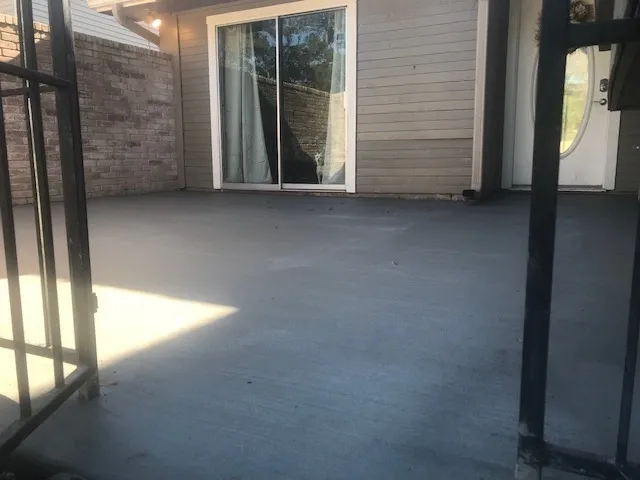
Quality Guarantee: Reputable concrete patio contractors often provide warranties on their work. This offers peace of mind. It protects your investment against defects or premature failure.
Code Compliance and Permits: Professionals are familiar with local building codes, setbacks, and permit requirements. They handle the necessary paperwork and inspections. This ensures your patio is built legally and safely.
Problem Solving: Unexpected issues can arise during excavation or pouring. Experienced contractors are equipped to handle unforeseen challenges. They can adapt to difficult site conditions.
What to Look for in Concrete Patio Contractors Near Me
When searching for "concrete patio contractors near me," consider these factors:
Licensing and Insurance: Verify that the contractor is properly licensed and insured (liability and worker's compensation). This protects you from financial responsibility in case of accidents or damage.
Experience and Portfolio: Ask for references and view their portfolio of past concrete patio projects. Look for examples of the finishes and designs you are considering.
Reviews and Reputation: Check online reviews on platforms like Google, Yelp, or industry-specific sites. Look for consistent positive feedback regarding quality, communication, and professionalism.
Detailed Quotes: Obtain at least three written, itemized quotes. Ensure they specify the concrete PSI, reinforcement, sub-base details, finish type, and any additional features. This allows for clear comparison.
Communication: Choose a contractor who communicates clearly, answers your questions, and is responsive. Good communication is vital for a smooth project.
Contract: Ensure all project details, costs, payment schedules, and warranties are clearly outlined in a written contract before work begins.
Hiring skilled concrete patio contractors is an investment in a durable, beautiful, and long-lasting outdoor living space. It significantly reduces the risks associated with a large concrete pour.
Understanding the Installation Process (Briefly for Cost Context)
While a detailed step-by-step is beyond this cost article's scope, understanding the major phases of patio installation helps justify professional costs. Each step requires labor and contributes to the overall project duration.
1. Initial Site Preparation
This involves clearing the designated 20x20 area of obstacles. Excavation follows, digging to the required depth for the slab and sub-base. Proper grading ensures future drainage.
2. Sub-Base Installation
Gravel or crushed stone is brought in and spread evenly. This layer is then thoroughly compacted. This creates a stable foundation for the concrete.
3. Formwork Setup
Lumber forms are meticulously set around the patio perimeter. They define the exact size, shape, and height of the concrete slab. Forms must be perfectly level and secured.
4. Reinforcement Placement
Wire mesh or rebar is laid out within the forms. It is elevated off the sub-base using chairs. This ensures the reinforcement is properly embedded within the concrete.
5. Concrete Pour and Placement
The ready-mix concrete truck arrives, delivering the precise volume calculated. The concrete is quickly discharged into the forms. It is then spread evenly using shovels and rakes.
6. Screeding and Floating
A screed board levels the wet concrete to the top of the forms. After initial leveling, floats are used to smooth the surface. This brings cement paste to the top.
7. Edging, Grooving, and Finishing
Edges are rounded with an edger tool for durability. Control joints are cut into the slab to manage cracking. Finally, the desired finish (broom, stamped, etc.) is applied.
8. Curing and Sealing
Once the finish is applied, the concrete needs proper curing. This is critical for strength gain. After curing, a sealer is often applied to protect the surface.
Each of these steps requires skill, experience, and the right tools. This highlights the value provided by professional concrete patio contractors.
Long-Term Costs and Maintenance
While the initial cost of a concrete patio is a primary concern, factoring in long-term maintenance can provide a more accurate picture of its total investment. Concrete is durable but benefits from care.
1. Sealing
Applying a high-quality concrete sealer is crucial for protecting your patio. Sealers help repel water, resist stains, and protect against UV damage. This prevents spalling and efflorescence.
Sealers typically need reapplication every 2-5 years, depending on traffic and climate. The cost for DIY sealing is minimal (material cost of sealer). Professional sealing will involve labor charges. This is a small ongoing cost.
2. Cleaning
Regular cleaning helps maintain your patio's appearance. Simple cleaning with a hose and mild detergent is usually sufficient. For tougher stains, a pressure washer can be used (with caution).
Avoid harsh chemicals or abrasive cleaners that can damage the concrete or sealer. Preventative measures, like wiping up spills quickly, reduce the need for deep cleaning. This is a negligible cost.
3. Crack Repair
While control joints minimize random cracking, minor cracks can still occur over time. These are often superficial. Small cracks can be filled with a concrete crack filler.
Larger, structural cracks may indicate underlying issues and require professional assessment. Addressing cracks promptly prevents them from worsening. This is an occasional, minor cost.
4. Resurfacing or Overlay
If your concrete patio is old but structurally sound, resurfacing or applying an overlay can refresh its appearance. This involves applying a thin layer of new concrete or a polymer-modified cementitious coating.
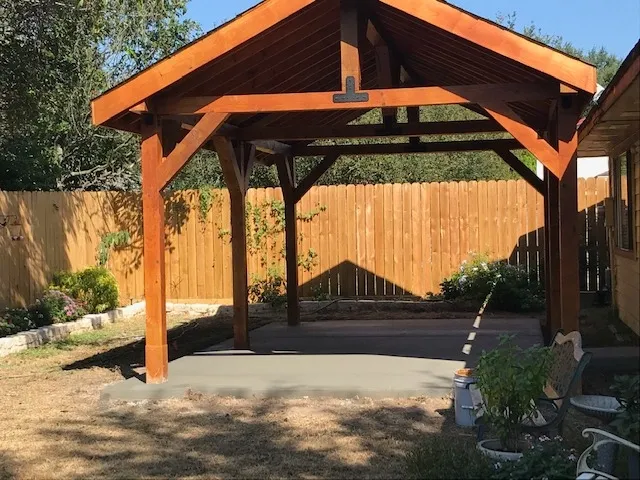
Overlays can mimic decorative finishes. This option is less expensive than a full replacement. Costs vary widely based on the chosen overlay and surface prep needed. This is a significant, but infrequent, cost.
Compared to other patio materials like pavers (which require weed removal and sand joint replenishment) or wood decks (which need regular staining/sealing and potential rot repair), concrete is relatively low maintenance. This contributes to its overall value.
Return on Investment and Property Value
Installing a new 20x20 concrete patio is not just about enhancing your lifestyle. It can also significantly increase your property's value. This makes it a smart home improvement investment.
Enhanced Usability and Appeal
A well-designed concrete patio creates valuable outdoor living space. It extends your home's usable footprint. This additional area is highly attractive to potential buyers.
It provides a dedicated area for entertaining, relaxing, and enjoying the outdoors. This increases the overall appeal and functionality of your property. Buyers often look for move-in ready outdoor spaces.
Durability and Low Maintenance
Concrete's inherent durability and relatively low maintenance are strong selling points. Buyers appreciate features that require minimal ongoing effort and cost.
Unlike wood decks that require frequent staining or painting, or paver patios that can shift and grow weeds, concrete offers a solid, long-lasting surface. This reduces future homeowner worries.
Aesthetic Versatility
With the wide range of decorative finishes available, a concrete patio can be customized to match any architectural style or landscape design. This versatility allows for unique and appealing aesthetics.
Whether it's a sleek modern look with polished concrete or a rustic charm with stamped stone patterns, a concrete patio can significantly boost curb appeal. This makes your home stand out.
Competitive Advantage
In a competitive real estate market, a high-quality concrete patio can give your home an edge. It signals a well-maintained and thoughtfully upgraded property. This can lead to a quicker sale.
It also justifies a higher asking price. The return on investment for outdoor living spaces is often significant. This is especially true for professionally installed, durable features.
Regional Cost Variations (Example: Houston, Texas)
Concrete patio costs can vary significantly by geographic location. What you pay in one area might be very different from another. This is due to local labor rates, material availability, and transportation costs.
For example, in a booming metropolitan region like Houston, Texas, you might expect costs to be at the higher end of the ranges discussed. High demand for construction and skilled labor can influence local pricing. These factors impact overall project pricing.
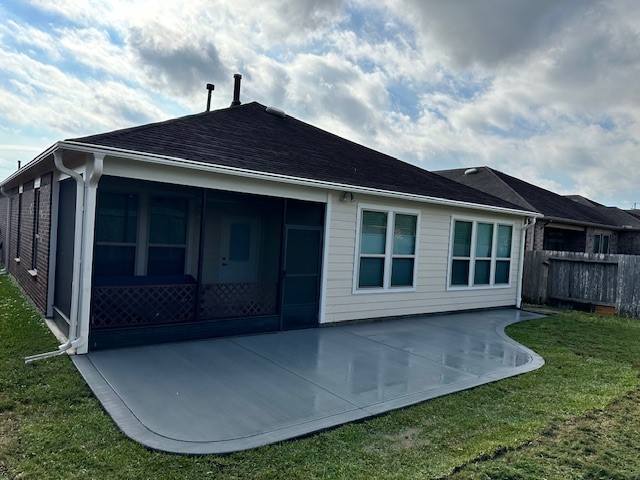
Material costs for aggregates and cement also fluctuate based on local quarries and transportation networks. Permits might also be more complex or carry varying fees in different Houston-area municipalities.
When searching for "concrete patio contractors near me" in your specific area, always factor in these regional differences. What's typical in one part of Texas might be uncommon elsewhere. Obtaining multiple local quotes is the best way to get an accurate estimate for your location.
Getting Accurate Quotes for Your 20x20 Patio
The best way to determine the precise cost for your 20x20 concrete patio is to obtain detailed quotes. Contact at least three reputable concrete patio contractors in your area. Provide them with as much information as possible.
What to Provide to Contractors
Exact Dimensions: Confirm it's 20x20 feet (400 sq ft).
Desired Thickness: State 4", 5", or 6" based on your intended use.
Site Conditions: Describe the current area (grass, existing patio, trees, slope). Mention any access issues for a truck.
Desired Finish: Be specific (broom, smooth, stamped pattern, color, stain, exposed aggregate). Provide images if possible.
Additional Features: List any steps, curves, built-ins, or drainage needs.
Timeline: Indicate your preferred start and completion dates.
What to Look For in a Quote
Itemized Breakdown: A good quote will itemize costs for excavation, sub-base, concrete (including PSI and admixtures), reinforcement, formwork, labor, finishing, and disposal.
Inclusions/Exclusions: Clearly understand what's included and what might be an extra charge.
Warranty: Ask about the warranty on their work.
Payment Schedule: Understand the deposit and progress payment structure.
Permit Handling: Confirm if they will handle the permits.
Be wary of quotes that are significantly lower than others. This might indicate shortcuts in materials, labor, or lack of proper insurance. Trust your instincts and prioritize clear communication and professionalism.
Conclusion
A 20x20 concrete patio is a significant home improvement that offers both aesthetic appeal and practical benefits. While a basic broom-finished slab might start around $4.50 to $8.00 per square foot ($1,800 to $3,200 total), the cost can quickly climb with decorative finishes and complex features. High-end stamped or colored patios can easily exceed $20 per square foot ($8,000+ total).
Key factors influencing the cost include slab thickness, concrete mix type, extensive site preparation, sub-base materials, reinforcement, formwork complexity, and accessibility for delivery. The most impactful cost driver, however, is the chosen finish, with decorative options requiring specialized labor and materials.
For a project of this size, hiring professional concrete patio contractors is highly recommended. Their expertise, efficiency, and access to proper equipment ensure a high-quality, durable, and long-lasting patio. While there's an upfront cost for their services, it often provides peace of mind and avoids costly mistakes associated with DIY attempts on such a large scale.
By understanding these cost drivers and meticulously planning your project, you can achieve a beautiful and functional 20x20 concrete patio that enhances your outdoor living experience and adds value to your home for years to come.
